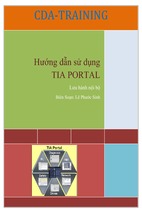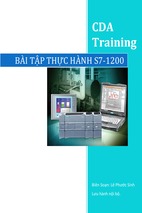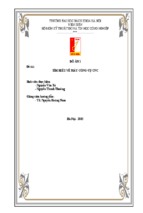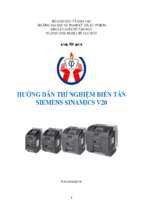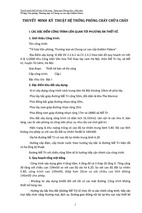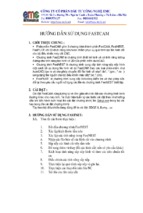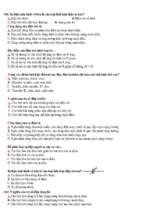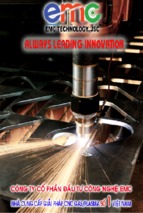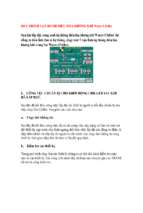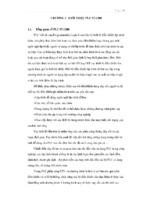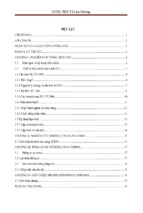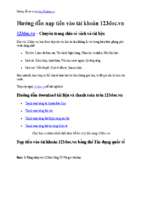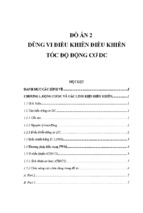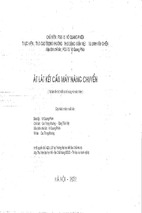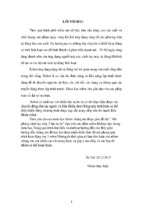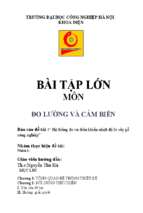Mô tả:
Work Sampling
Work and Time Studies
Vietnamese German University
Dr.-Ing. Marlene Helfert
2016
Dr.-Ing. Marlene Helfert | Work and Time Studies | 2016 | 1
Work sampling
Contents
Work sampling
Description
Application example
History
Characteristics
Implementation of work sampling
REFA standard program work sampling
Goal determination
Definition of activities to record
Preparation of notations
Scope of observations
Tour planning / employee training
Technical / organizational preparation
Test rounds and notations
Continuation of notations and intermediate evaluation
Final evaluation
Summary
Dr.-Ing. Marlene Helfert | Work and Time Studies | 2016 | 2
Work sampling
Description
Work sampling is a method of finding the proportions of total
time devoted to various activities that constitute a job or work
situation by random sampling.
The percentage of time that a process is in a certain activity is
obtained by the ratio of observations of the given activity to
the total number of observations.
Consider an analyst who takes 100 observations of
the shop floor at random intervals over several
weeks.
It was observed that a certain machine was idle in 30
instances for miscellaneous reasons.
The estimated idle time of this machine would then
be 30% of the working time.
Salvendy 2001
Dr.-Ing. Marlene Helfert | Work and Time Studies | 2016 | 3
Work sampling
Haller-Wedel 1969
in Schlick 2005
Dr.-Ing. Marlene Helfert | Work and Time Studies | 2016 | 4
Work sampling
Application example
Example of work sampling in a large company of the retail industry for need related
short-term manpower planning
Schlick 2005
Dr.-Ing. Marlene Helfert | Work and Time Studies | 2016 | 5
Work sampling
Main utilization
H1
Cutting
Anciliary utilization
N1
Bring paper on machine
N2
Handle paper in machine
N3
Remove product
N4
Back gauge running
N5
Set up machine, programming
Interruption due to the cycle
A1
Change or adjust blade
A2
Lubricate mach.; clean w.p.
A3
Meeting with supervisor
A4
Drive palettes
Additional utilization
Z1
Additional cut
Interruption due to dysfunction
S1
Minor maintenance works
S2
Further enquiry at other areas
S3
Programm correction
Interruption due to recovery
E1
Recovery at workplace
Interruption personal reasons
P1
Drink break
P2
Other personal breaks
L1
Not in use
X1
Not identifiable
REFA 1997
Dr.-Ing. Marlene Helfert | Work and Time Studies | 2016 | 6
Work sampling
History
L. H. C. Tippett first applied work sampling in the British textile
industry during the early 1930s.
The technique was later introduced in the United States by
Morrow (1941) under the name ‘‘ratiodelay study.’’ The
technique did not gain wide acceptance at the outset.
In 1952 the name ‘‘work sampling’’ was coined by Brisley and
Waddell. At that time increased attention was being paid to
indirect labor.
Salvendy 2001
Dr.-Ing. Marlene Helfert | Work and Time Studies | 2016 | 7
Work sampling
Characteristics
Simple method, that provides information fast and at
considerably less cost
Results are representative
Can be adapted to analyze complex and sophisticated patterns
of work
Many work systems (5-50) can be included in the study
Results are effective for determining machine and personnel
utilization, and allowances applicable to the job and
production standards.
Particularly useful for analyzing non-repetitive or irregularly
occurring activities where no complete methods or frequency
descriptions are available
Also called activity sampling, ratiodelay study, random
observation method, snap-reading method, and observation
ratio study
Salvendy 2001
REFA 2013
Dr.-Ing. Marlene Helfert | Work and Time Studies | 2016 | 8
Work sampling
Advantages
Comprehension of a large amount of workstations is possible
Less time-consuming in comparison to the stop watch time
study
No special measuring instruments necessary
Eliminates tension caused by constant observation of the
worker
Does not require continuous observations over a long period
of time
Represents typical or average conditions over a period of time
where conditions change from hour to hour or day to day
Ideally suited to studies of machine utilization, activity
analyses, and delays
Bruder 2012
Salvendy 2001
Dr.-Ing. Marlene Helfert | Work and Time Studies | 2016 | 9
Work sampling
Disadvantages
Time-influencing variables and reasons for actual times are not
directly apparent from the results of the study
Requires the observer to identify and classify a wide range of
work activities and delays
Assumes that the worker uses an acceptable and standard
method
Results are based on non-recurring observations and thus are
not to be verified later on
Results may be manipulated by observing persons
Performance rates can not be measured
Bruder 2012
Salvendy 2001
Dr.-Ing. Marlene Helfert | Work and Time Studies | 2016 | 10
Implementation of work sampling
Reliability
The accuracy of the data determined mainly depends on
The number of observations made
The length of the period under which the study was
undertaken
The conditions under which the study was conducted
Reliability and accuracy of information can only be obtained
by using a sufficiently large sample size and a sampling period
representing typical conditions.
To observe all possible conditions, several tour plans are
worked out, and at the beginning of the observation one tour
is chosen randomly.
The observation tours are done, until the required amount of
notations is achieved. The required amount of notations
results from the desired statistical reliability of the results. In
general, a confidence level of 95% is chosen.
Salvendy 2001
REFA 2013
Dr.-Ing. Marlene Helfert | Work and Time Studies | 2016 | 11
Implementation of work sampling
Duration
Work sampling studies normally extend over a long period
(two- to four-week period) to enable a comparatively large
number of observations at random intervals to be taken.
“One-day work sampling studies” are useless, since they can
not cover seldom occurring events.
The recording can be interrupted and continued at a later time
without consequences for the result.
With intermediate evaluations, the achieved statistical quality
of the results can be assessed. If it is sufficient, the study can
be early stopped.
Salvendy 2001
REFA 2013
Dr.-Ing. Marlene Helfert | Work and Time Studies | 2016 | 12
Implementation of work sampling
External or self-recording
In general notations are done by observers (external recording)
moving on their defined tour.
Self-recording is possible, if technical aids (software) are
provided and the statements to be noted are related to the
task of the employees.
Self-recording does not require additional personnel effort for
observers, and is useful for activities, that are difficult to
observe (e.g. designing)
The decision for external or self-recording needs to be done
prior to the start of the study.
REFA 2013
Dr.-Ing. Marlene Helfert | Work and Time Studies | 2016 | 13
Implementation of work sampling
Work council
If the observed activities shall be used for performance
standards, or if they can be used to assess the performance of
employees, the implementation of the study needs to be
discussed with the work council prior to starting the study.
REFA 2013
Dr.-Ing. Marlene Helfert | Work and Time Studies | 2016 | 14
Implementation of work sampling
Characteristic
Content
Example
Representativeness of results
Data represent a real situation
Utilization of production facilities;
effort for distinct tasks
Randomness of
data recording
Every event must have the same chance
to be recorded
Observation tours with randomly
chosen times and orders
Effectiveness
Implementation with 5-50 work systems
is possible; software support allows
studies on several events with several
observers and durations of some weeks
Recording of frequency of executed
tasks simultaneously in different
business areas without disturbance of
the employees
Reliability
The reliability of the study can be
ensured by statistics
Statistical demands on the result
determine the amount of notations
Accuracy
Results are as accurate as required
Accuracy can be defined
Requirements
Qualified planning; no special
professional demands on the
implementation
Observation rounds (amount, order,
duration)
Implementation
Appropriate planning; interruption does
not affect the results
Several people can observe; absence or
replacement of an observer does not
affect the result
REFA 2013
Dr.-Ing. Marlene Helfert | Work and Time Studies | 2016 | 15
REFA standard program work sampling
1
Goal determination
2
Definition of activities to record
3
Preparation of notations
External (E) or selfrecording (S)?
E
S
4
Tour planning: jobs, routes, times
4
Employee training
5
Technical/organizational preparation
5
Technical/organizational preparation
6
Test rounds and notations
6
Test rounds and notations
7
Evaluation of test tours
7
Evaluation of test tours
8
Continuation of notations
9
Intermediate evaluation
Yes
Confidence interval
sufficient?
10
Final evaluation
No
REFA 2013
Dr.-Ing. Marlene Helfert | Work and Time Studies | 2016 | 16
REFA standard program work sampling
REFA 2013
Dr.-Ing. Marlene Helfert | Work and Time Studies | 2016 | 17
Goal determination
Applications of the study
Gaining information on order throughput (execution and
interruption times, actual throughput times) and to be
executed tasks (frequency, occurrence, duration)
Gaining information on working conditions (hazards and
emissions)
Determination of work data for performance standards and
agreements
Determination and checking of allowances
Determination and display of shares of value-creating and nonvalue-creating activities
REFA 2013
Dr.-Ing. Marlene Helfert | Work and Time Studies | 2016 | 18
Goal determination
Possible focusses of the study
Production facilities: Utilization and interruption of utilization
Do the machines operate at full capacity?
For which tasks are they mainly used? What are the
proportions of these machine utilization types?
What are the ratios of fault and idle times of the machines?
Working person: Activities and interruption of activities
Do the workers operate at full capacity?
Which activities are done by the workers and what are their
time shares?
Which allowance and waiting time proportions for the
workers should be expected?
Workpiece: Processing and interruption of processing
Which processing steps need which time share?
What is the ratio of the processing time (time actually
worked on the work piece) to the throughput time (time it
takes to produce it)?
Dr.-Ing. Marlene Helfert | Work and Time Studies | 2016 | 19
Goal determination
Corresponding to the goal of the study the following items are
defined
Study task and purpose
Study area (business field, orders, processes, work systems)
Time frame of the study
Participants of the study
Further preparations
Decide on the recording form and the use of software
Inform and train (in case of self-report) all participants
REFA 2013
Dr.-Ing. Marlene Helfert | Work and Time Studies | 2016 | 20
- Xem thêm -

